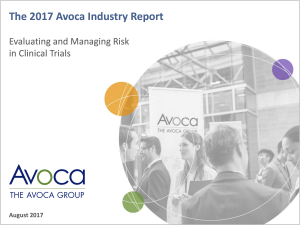Are Risk-based Approaches to Assessing and Managing Clinical Trials Sustainable?
So far, the implementation of ICH E6 (R2), with its risk-based approaches to assessing and managing clinical trials, has been a bumpy ride. Results have not been outstanding, to say the least. In fact, sponsors and providers are within their rights to wonder if the new paradigm is sustainable in the long-term. But the problem may not lie with the guidelines. The issues might be a bit closer to home.
Passive vs. Active
The Avoca Group’s research, documented in the 2017 Avoca Industry Report, shines a light on what’s happening with risk assessment and management across the board. First, the type of refinements sponsors and providers are willing to make tend to be more passive than active in nature.
Changes to the review plan for performance data or to the monitoring strategy are the most prevalent actions taken in response to risk assessments. In contrast, more aggressive actions, such as changes to trial operations – including changing the number or disposition of specific sites – are far less common.
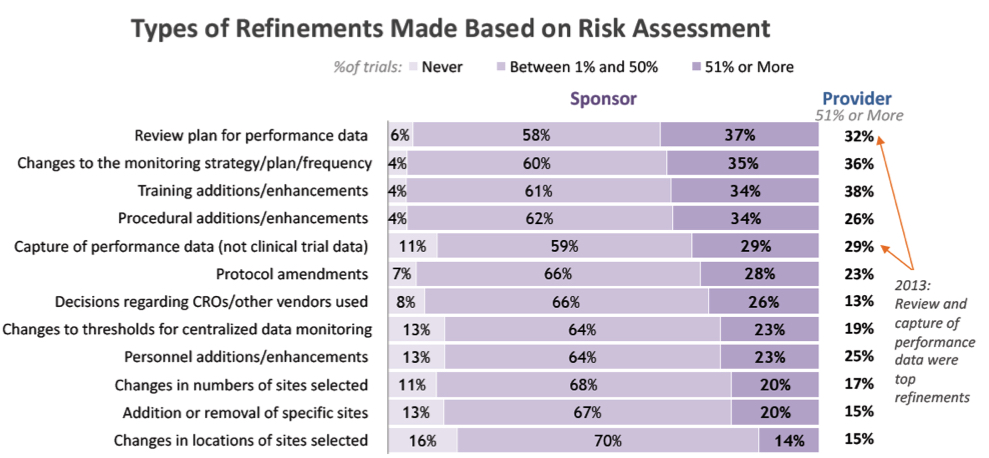
Basically, sponsors and providers are willing to make “safe bets” – things that don’t have a huge impact on clinical trial operations or results. For example, a sponsor might increase the frequency of monitoring or the number of training sessions required. Such actions may or may not benefit the clinical trial, but they certainly won’t hurt it in any way.
However, when it comes to matters such as potentially changing the number of sites involved in a clinical trial – a decision that could seriously impact the logistics, cost, and outcomes of a trial – the willingness to take the plunge decreases substantially.
Severity vs. Detectability
A second point of consideration involves the components of risk assessment. ICH E6 (R2) lays out three areas of risk assessment: severity, probability, and detectability. Sponsors and providers are doing a good job assessing the severity or level of harm that a risk carries. Assessing the probability of a risk event lags behind that a bit but is still respectable. Nonetheless, the numbers definitely take a dive when looking at how often detectability is being assessed.
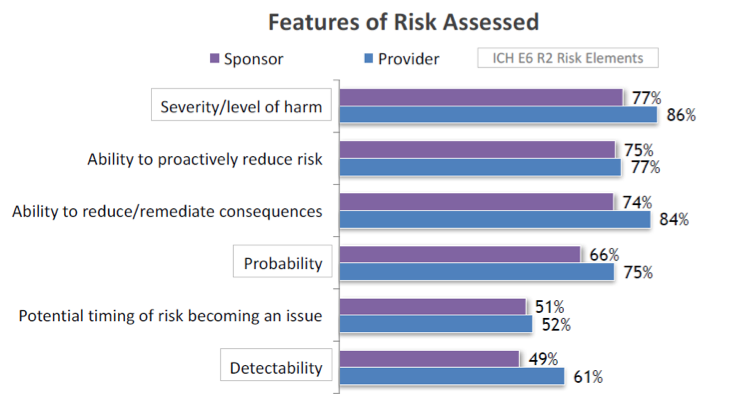
This brings up an important point: if sponsors and providers cannot see a looming risk, how can they address it? If sponsors and providers cannot detect where a risk lies, they are completely exposed to that risk.
Qualitative vs. Quantitative
Third, it should be noted that one of the goals of risk-based assessments is to give sponsors and providers hard facts to consider in decision-making processes. But, while approximately half of each group are using a hybrid approach of both qualitative and quantitative methods to assess risk, a significant minority still use a primarily qualitative approach to risk assessment.
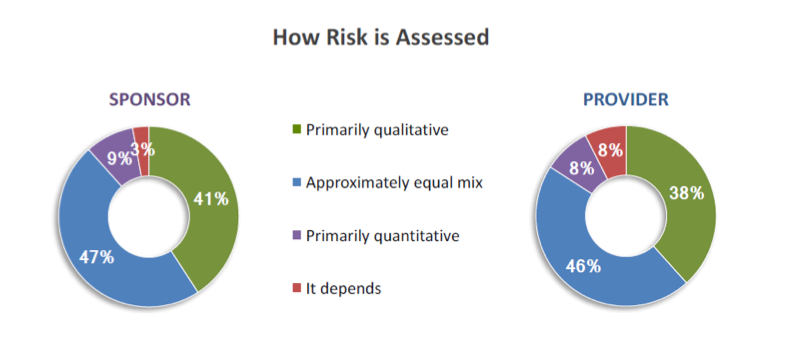
This shows that there is work to be done for sponsors and providers overall to move to the place where they can say, “This is the data we used in our risk assessment. This is how we analyzed it. This is how we applied our expert judgment to that analysis in making our decision.” That mix of qualitative and quantitative approaches is where the highest level of benefit will be realized.
What’s the Impact?
One of the biggest red flags raised by the 2017 Avoca Industry Report is that both sponsors and providers view the new risk assessment and management approaches as having only a moderate impact on increasing quality.
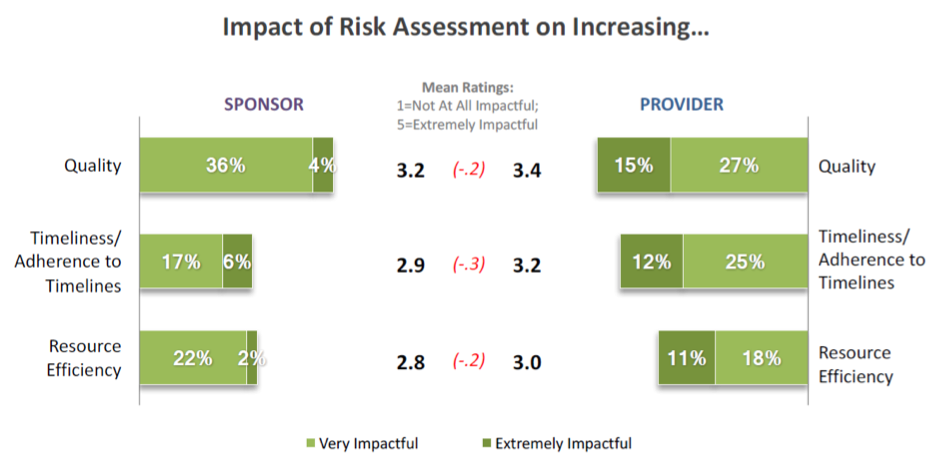
Considering that the whole focus of ICH E6 (R2) is to improve quality in clinical trials, this is not good. It would be easy to blame the lack of impact on the nature of the ICH E6 (R2) guidelines. But the previous points beg the question: Might this lack of impact be attributable to…
- A tendency to prefer passive refinements to active ones.
- An uncertainty about how to assess detectability, as compared to severity, of risks.
- The exclusive use of qualitative methods for assessing risk, rather than a hybrid qualitative/quantitative approach.
In other words, are we not seeing a bigger impact because we have not been willing to make bigger bets? As long as sponsors and providers “play it safe,” it is reasonable to anticipate only mediocre results. What impact would ICH E6 (R2) have if sponsors and providers made aggressive refinements to their clinical trials based on their risk assessments? What would happen if risks could be detected with a high degree of precision? What if assessments were based on the perfect blend of the subjective and the objective?
I suspect that the impact which would result would, once and for all, answer in the affirmative the ultimate question: “Is this sustainable?”
Is your company moving toward greater use of risk-based approaches for quality and oversight? The Avoca Group specializes in supporting sponsors and CROs to comply with ICH E6 (R2) through the use of risk-based approaches to quality and oversight. The Avoca Group’s consulting services are grounded in the leading practices and tools from the Avoca Quality Consortium® and customized to drive measurable improvements to quality and execution of clinical trials. To learn more, or to speak with a representative, contact us.
Download Avoca’s 2017 Industry Survey Report
.
Author:
 |
Dennis Salotti
Vice President, Operations, The Avoca Group |

